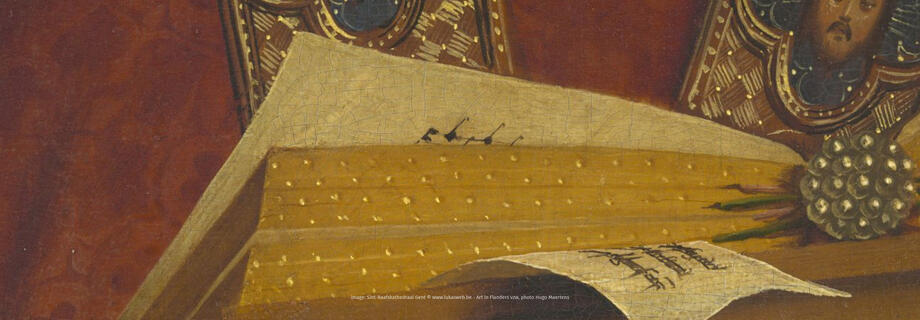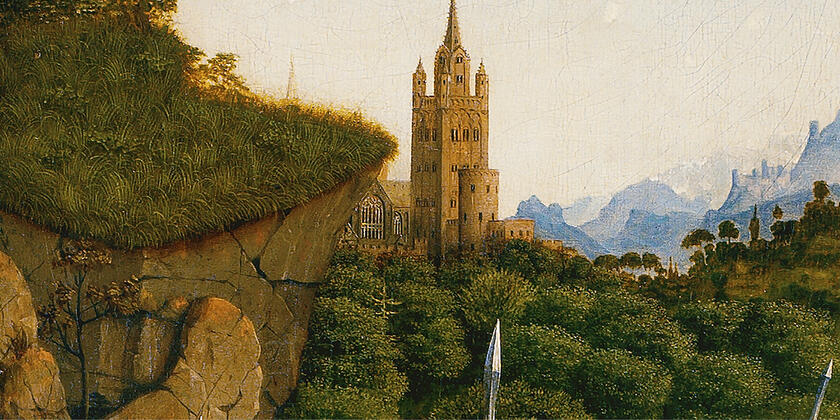Do you hear them sing?
On the left side of the figure of God, a group of singing angels stands around a richly decorated lectern. This group forms the counterpart of the organ on the other music panel. The lectern is another fine example of detailed work. It incorporates a sculpture of the battle between the Archangel Michael and the dragon, a reference to the Book of Revelation. On top of the lectern there is an open manuscript revealing a few notes: ut [fa] ut [la]. The notes are written in mensural notation, which is characteristic of polyphony.
Although it was customary in the Middle Ages for singers to read from a single score, the manuscript is almost never looked at. The singers know the pieces by heart and the score is merely a reminder. Researchers cannot say with certainty which piece of music the angels are actually singing. What is certain is that Van Eyck did not paint a haphazard mishmash. Judging by the different facial expressions and frowns, we can deduce that the angels are singing in polyphony and from the position of their mouths it can be deduced who is singing which voice: soprano, haute-contre, tenor or bass.
The Ghent Altarpiece is a valuable source of information not only for researchers, but also for musicians from all over the world. Although it is more than 500 years old, musicians, composers and instrument builders are still inspired by Van Eyck's masterpiece. The Ghent Altarpiece is so much more than just a piece of world heritage, it is a living icon that continues to bring about contemporary musical interpretations.








